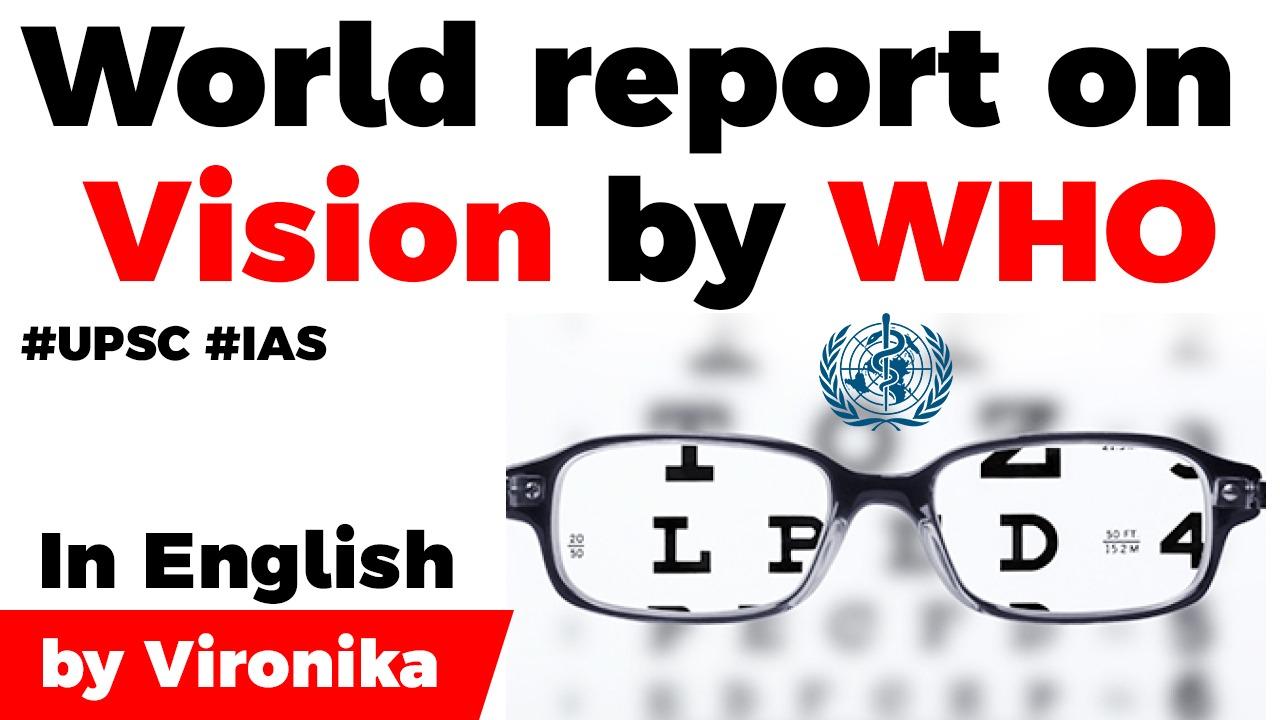Table of Contents
Context
- World Vision Report was recently released by WHO.
Highlights
- Some 2.2 billion people — suffer from vision impairment.
- population ageing would lead to a dramatic increase
- Presbyopia, a condition in which it is difficult to see nearby objects, affects 1.8 billion people.
- Cataract (65.2 million), age-related macular degeneration (10.4 million), glaucoma (6.9 million), corneal opacities (4.2 million), diabetic retinopathy (3 million), trachoma (2 million), and other causes (37.1 million) are other common vision impairments listed in the report.
- According to the report, in 2016- 17, the NPCB provided cataract surgery to a total 6.5 million people in India, achieving a cataract surgical rate of over 6,000 per million population.
- The prevalence of vision impairment in low- and middle income regions was estimated by the report to be four times higher
- Myopia is the highest in high income countries of the Asia Pacific region (53.4 per cent), closely followed by East Asia (51.6 per cent).
Vision
- Impacts quality of life (QoL)
- Productivity loss and economic burden.
- The economic burden of uncorrected myopia in the regions of East Asia, South Asia and South-East Asia were reported to be more than twice
Prevention
- Out of one billion cases of vision impairment that could have been prevented, 11.9 million suffered from glaucoma, diabetic retinopathy and trachoma that could have been prevented.
- Regarding gender gap, the WHO said no strong association existed between gender and many eye conditions, including glaucoma, agerelated macular degeneration, and diabetic retinopathy.
- However, rates of cataract and trachomatous trichiasis are higher among women, particularly in low and middle-income countries,” it clarified.
Barriers
- Accessibility to eye care services and high costs
- Affordability to buy lenses or spectacles was a major stumbling block.
- The WHO report, as with many other studies, highlighted that there was a gender disparity in accessibility to eye care services, with women standing a lesser chance of availing them.
Way Forward
- Universal health coverage.
- Promote high-quality implementation and health systems research
- Monitor trends and evaluate progress
- Raise awareness
Latest Burning Issues | Free PDF






















 WhatsApp
WhatsApp